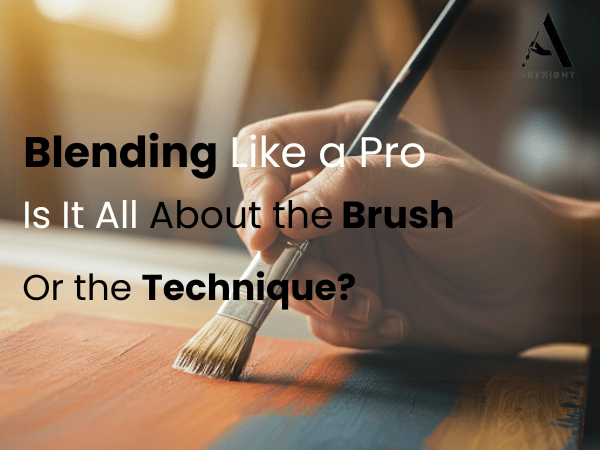
Blending Like a Pro: Is It All About the Oil Paint Brush, or the Technique?
Colors, lines, shades and so much more…as an artist, you have to match them all like a pro. It is with effective blending that you can add that element of softness, depth and realism to your artwork. You need to use the best oil paint brushes and make use of proper techniques to bring your art projects to life. The question is – how to blend it like a pro? Take a look.
How do Brushes Influence Blending?
The shape of your brush determines a lot of how effectively you will be able to blend. You can achieve smooth and soft transitions between your colors with Filbert brushes that have rounded edges. However, when you wish to create wispy, delicate effects in foliage, hair, and other areas, you need fan brushes.
For gradual color shifts or for broader strokes, flat brushes can be your best bet. If you want to blend in smaller and detailed sections, choose round brushes. You can also see a noticeable difference when you use brushes of different quality. Synthetic bristles are softer and are more suitable for watercolors and acrylics. Hog hair and other natural bristles are stiff and can last longer. With high-quality brushes, you can control your pain flow and distribution in a much better way, blending everything in a more refined way.
Keep in mind that your blending will not be precise if you experience frayed bristles, dried paint, or residue build-up. That is why, you have to store and maintain your brushes properly, with regular cleanup, reshaping and effective care. In this way, you can achieve fluid, smooth transitions.
Why Technique Matters in Blending?
Your artwork and blending can be truly outstanding when you use the right technique. You can try wet-on-wet blending, an effective method marked by direct application of fresh paint onto a wet surface. With such a technique, you can merge colors in a natural way on the canvas. You can achieve organic, soft transitions. It can be especially useful for oil paints, as these dry more gradually and you can get more freedom to blend.
Feathering is another important method, in which you are supposed to use delicate, soft strokes with minimal pressure. It can create a gradual fade and help you to avoid harsh lines.
If you want to create a more subtle blending effect, try the Dry Brushing technique. You can use minimal paint in this method, and still manage to create textured, fine transitions. This makes it perfect for creating atmospheric effects or landscapes.
Brush or Technique: Which One Reigns Supreme?
If you want to blend flawlessly, do not depend only on your brush or on your technique. You have to ensure a perfect combination of both, if you want to make a serious difference. Even the best professional paint brush set will fall short if you lack the proper skills.
• You need to use a refined painting technique to avoid struggling with color transition control. Otherwise, you will face uneven blending of colors or streaks.
• On the other hand, if you use low-quality brushes, it will reduce your capacity to apply paint properly and manipulate it well.
• Your painting results will be outstanding if you manage to achieve a perfect synergy between your technique and the brush that you use.
As a smart painter, you have to realize that the art of proper blending is not only about smudging colors. You have to create depth, emotion and atmosphere. You need the best quality oil paint brushes and be adept in a wide range of blending techniques, so that you can create artwork seamlessly. It will be easier for you to come up with highly impressive transitions that can stir imagination and keep beholders wonderstruck!
Takeaway
If you want to blend everything like a master painter, it is essential for you to choose high-quality professional paint brushes. Go for brushes that come with responsive, long-lasting brushes that are able to survive frequent use with no loss of shape. Try using brushes of varied shapes and having ergonomic handles, which can make painting easier for you and blend very effectively. With a versatile brush set that can work with various mediums well enough, you can blend it all effectively – whether watercolors, acrylics or oil paints.
